African Swine Fever (ASF), the biggest threat to the pig sector, has spread to many countries, affecting an estimated 77% of the world’s pig population.
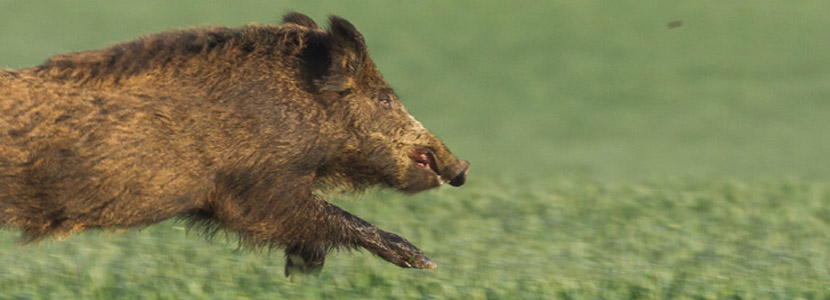
African Swine Fever (ASF), the biggest threat to the pig sector worldwide, has spread to more than 55 countries on three continents, affecting an estimated 77% of the world’s pig population.
In the EU, wild boar (Sus scrofa) is the most important host of ASFV. In fact, the main factors that have facilitated the constant and unprecedented spread of ASF through Europe are:



ASF OUTLINES THE NEW WORLD ORDER FOR THE PIG SECTOR
African Swine Fever is one of the viral diseases with the greatest impact on the pig sector, as virulent strains of the virus cause acute or hyperacute hemorrhagic fever in animals with up to 100% mortality.
Due to its devastating animal health and socio-economic consequences, ASF is classified as a Notifiable Disease by the OIE.
In the absence of an effective vaccine or specific treatment against ASF, control of the disease is based on depopulation and restrictions on local, national and international trade in live pigs and their products.
The epidemiological pattern of ASF varies significantly in terms of:
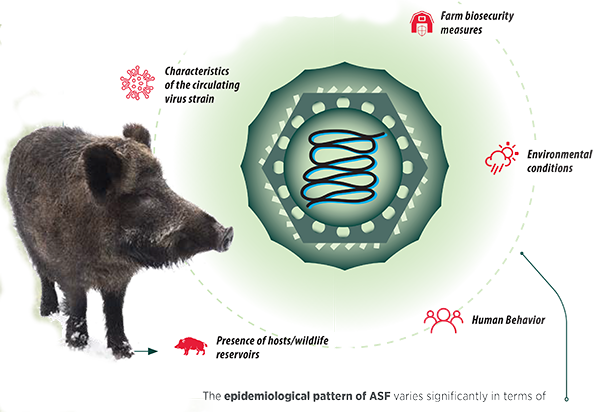
EPIDEMIOLOGY
After its introduction in Georgia from East Africa, ASFV genotype II has been circulating in Eastern Europe since 2007, in the EU since 2014 and in Asia since 2018.
In the last years, 11 EU countries (Lithuania, Poland, Latvia, Estonia, Czech Republic, Hungary, Bulgaria, Belgium Romania, Slovakia and Italy) have reported cases of ASF, 90% of which can be attributed to wild boar. Therefore, an epidemiological analysis carried out in Estonia concluded that wild boar is the main risk factor for the transmission of ASF in Europe.
The maintenance and the spread of the virus, which remains endemic in wild boar populations in the EU, has been facilitated by the movement of infected animals.
CLINICAL SIGNS
Clinical manifestations of ASF depend on several factors, including the virulence of the strain, the host, the infecting dose and the route of infection.
With an incubation period of 3-19 days, the disease manifests itself with
Clinical signs and congestive lesions: haemorrhage, oedema, ascites and shock
Affectation of the digestive and respiratory systems
Mortality between 10-100% (depending on of the virulence of the strain)
While recent studies indicate circulation of moderately virulent strains, genotype II is responsible for the outbreaks Eurasians and is highly virulent, inducing an acute clinical form with almost 100% mortality in domestic pigs and wild boar.
WITH AN EYE ON VACCINATION
Having an effective vaccine against ASF has become a priority for the global pig sector and yet it is has been hampered by:
In Europe, the interest in developing an effective vaccine has been on the rise:


The design of vaccine candidates has been facilitated by the identification of the ASFV genes related to virulence and evasion of the immune response.
The experimental infection of domestic pigs with this strain has been successful in providing protection against a highly virulent, haemadsorbent strain of ASFV genotype II (Arm07), suggesting that the Lv17/WB/Rie1 strain could be used as a live attenuated vaccine.
COULD ASF CONTROL BE ACHIEVED THROUGH VACCINATION OF WILD BOAR?
There is a huge interest in developing a vaccine against ASFV that is applicable in wild boar. Already the vaccination of these animals proved to be very valuable for the control of Classical Swine Fever. However, so far, tests have only been conducted on domestic pigs.
That is why, in this study, we show that oral immunization of wild boar with the attenuated virus Lv17/WB/Rie1 confers a protection of 92% by challenging the animals with a virulent strain (Arm07).
EXPERIMENTAL DESIGN 

The study was carried out with 18 wild boar piglets, 3-4 month old and 10-15 kg from a farm (located in Extremadura, Spain). The study was housed in BSL-3 facilities (VISAVET) and animals were fed ad libitum.
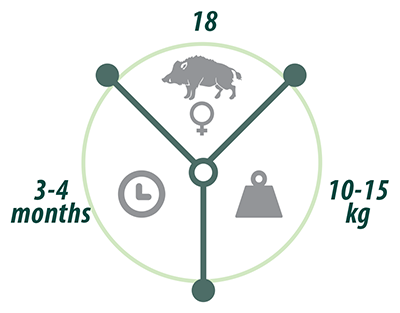

Non-hemadsorbent ASFV genotype II (Lv17/WB/Rie1) was used for immunization of the animals.
This non-hemadsorbent virus has a mutation in the EP402R gene that results in a truncated protein.
The Arm07 haemadsorbent strain of ASFV genotype II was used for the challenge.

During the experiment, 12 out of the 18 wild boar participated in the 30-day vaccination trial in order to assess the development of a protective immune response and the transmission of the vaccine to other animals by contact:
Initially, 9 animals were orally vaccinated (104 TCID50* of Lv17/WB/Rie1). The other 3 (VContact) were exposed to those who received the oral vaccine at 0, 7 and 15 days post-vaccination to determine the transmission of the vaccine at different times.
To assess the protective efficacy of the vaccine against a virulent strain of ASFV, the vaccinated animals were exposed to 4 individuals that had been inoculated by intramuscular route with 10 HAD50** from the Arm07 ASFV strain.
CHALLENGE
In addition, 30 days after vaccination, 2 unvaccinated and uninfected wild boar were exposed to all animals to determine the transmission of the vaccine or the virulent strain.
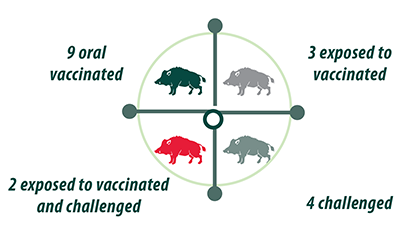
EVALUATION
The following parameters were monitored throughout the trial
Subscribe now to the technical pig magazine
AUTHORS

Bifet Gracia Farm & Nedap – Automated feeding in swine nurseries

The importance of Water on pig farms
Fernando Laguna Arán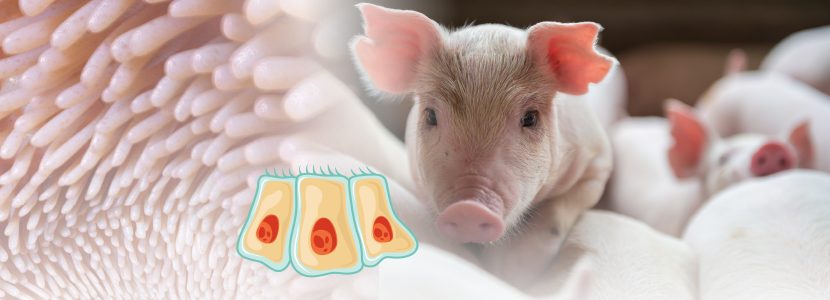
Microbiota & Intestinal Barrier Integrity – Keys to Piglet Health
Alberto Morillo Alujas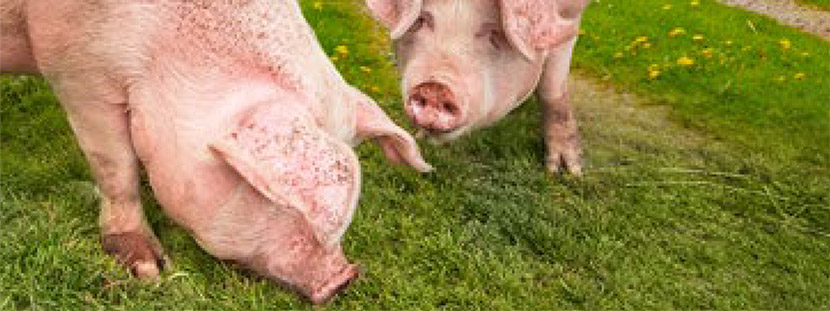
Impact of Reducing Antibiotic use, the Dutch experience
Ron Bergevoet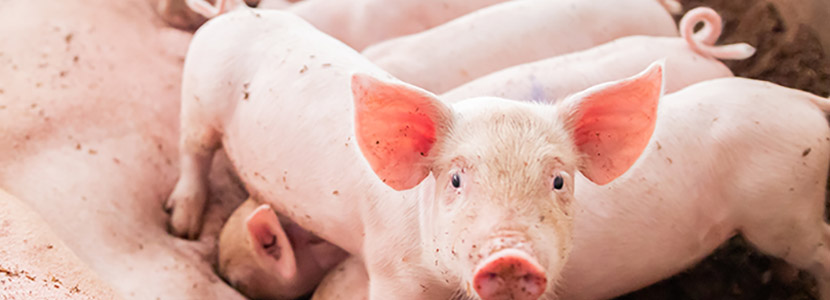
The keys to successful Lactation in hyperprolific sows
Mercedes Sebastián Lafuente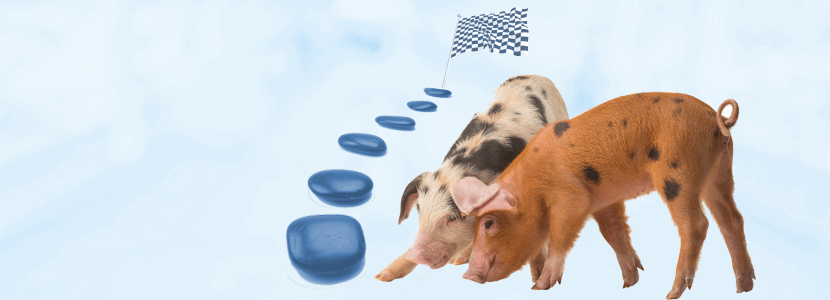
Addressing the challenge of Management in Transition
Víctor Fernández Segundo
Dealing with the rise of Swine Dysentery
Roberto M. C. Guedes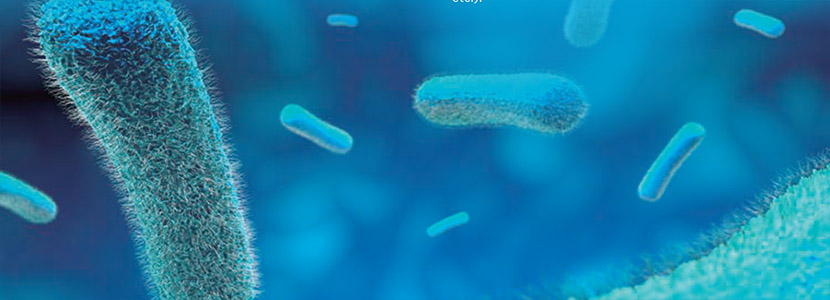
Actinobacillus pleuropneumoniae – What are we dealing with?
Marcelo Gottschalk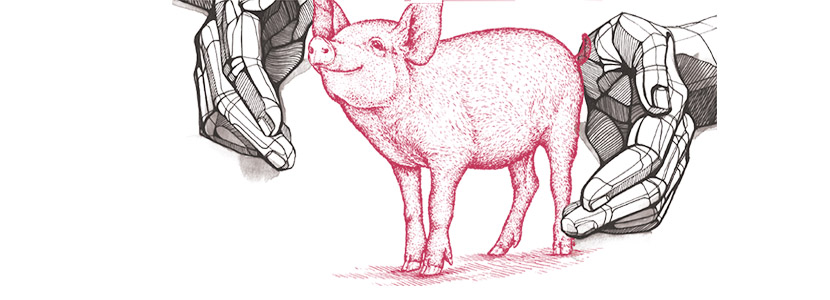
The new era of Animal Welfare in Pig Production – Are we ready?
Antonio Velarde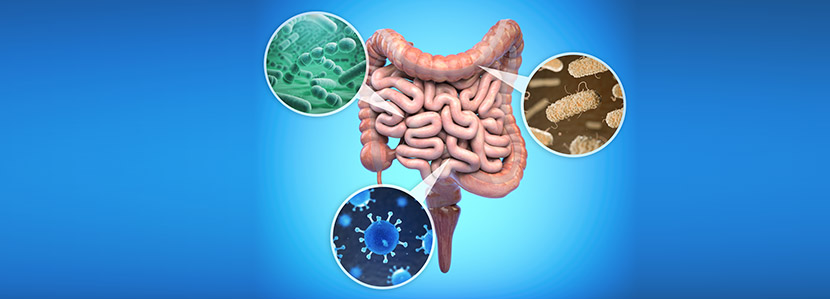
Gut health in piglets – What can we do to measure and improve it?
Alberto Morillo Alujas
Interview with Cristina Massot – Animal Health in Europe after April 2021
Cristina Massot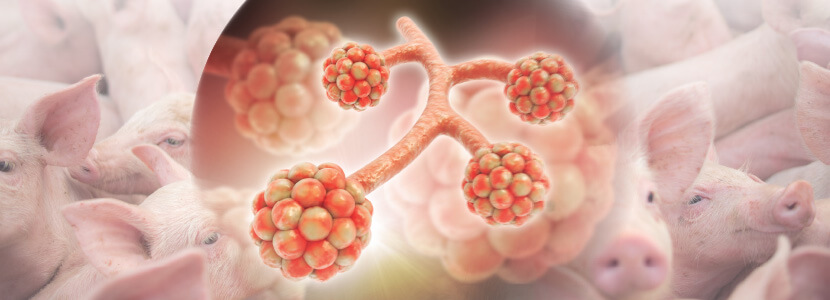
Differential diagnosis of respiratory processes in pigs
Desirée Martín Jurado Gema Chacón Pérez